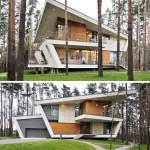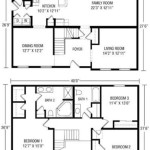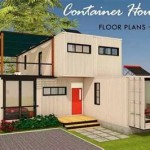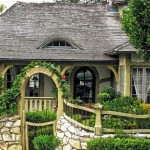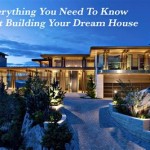Net Zero House Plans are architectural blueprints for constructing residences that achieve net-zero energy consumption. These plans incorporate advanced design strategies and technologies to ensure that the energy generated onsite through renewable sources, such as solar panels or geothermal systems, meets or exceeds the home’s annual energy needs. Net Zero houses play a crucial role in combating climate change by reducing greenhouse gas emissions associated with traditional home energy consumption.
In practice, Net Zero House Plans have proven their effectiveness in reducing energy costs and promoting sustainable living. For instance, the U.S. Department of Energy’s Zero Energy Ready Home program showcases homes built according to net-zero principles that have significantly lowered their energy bills. These homes provide a comfortable and energy-efficient living environment while contributing to a greener, healthier future.
In this article, we will explore the key elements of Net Zero House Plans, their benefits, and the considerations involved in designing and constructing these environmentally friendly homes.
Net Zero House Plans prioritize sustainable design and energy efficiency, incorporating the following key elements:
- Optimized Insulation
- High-Performance Windows
- Energy-Efficient Appliances
- Renewable Energy Systems
- Smart Energy Management
- Airtight Construction
- Thermal Bridging Minimization
- Passive Solar Design
By addressing these aspects, Net Zero House Plans create homes that are not only environmentally responsible but also comfortable, cost-effective, and resilient.
Optimized Insulation
Optimized insulation plays a vital role in Net Zero House Plans by minimizing heat transfer between the home’s interior and exterior. This reduces the energy required for heating and cooling, contributing significantly to the home’s overall energy efficiency.
- Proper Insulation Materials: Net Zero House Plans utilize high-quality insulation materials with excellent thermal resistance, such as cellulose, fiberglass, or spray foam. These materials effectively impede heat flow, keeping the home warm in winter and cool in summer.
- Continuous Insulation: Proper insulation installation involves creating a continuous layer of insulation throughout the home’s envelope, including walls, ceilings, and floors. This prevents thermal bridging, where heat can escape through uninsulated areas.
- Air Sealing: In addition to insulation, air sealing is crucial to prevent air leaks that can compromise the home’s energy efficiency. Net Zero House Plans incorporate air sealing measures such as caulking, weatherstripping, and sealing around pipes and wires to minimize air infiltration.
- Insulation Thickness: The thickness of insulation is determined based on climate conditions and building codes. Net Zero House Plans optimize insulation thickness to achieve the desired thermal performance and energy efficiency levels.
By optimizing insulation, Net Zero House Plans create thermally efficient homes that minimize energy loss, reduce heating and cooling costs, and contribute to a more comfortable and sustainable living environment.
High-Performance Windows
High-performance windows are a crucial component of Net Zero House Plans, contributing significantly to the home’s energy efficiency and overall performance. These windows are designed to minimize heat loss during winter and heat gain during summer, reducing the energy required for heating and cooling.
One key characteristic of high-performance windows is their low U-factor, which measures the rate of heat transfer through the window. The lower the U-factor, the better the window’s insulating properties. Net Zero House Plans specify windows with low U-factors to reduce heat loss and improve energy efficiency.
Another important factor is the window’s solar heat gain coefficient (SHGC). SHGC measures the amount of solar heat that passes through the window. While some solar heat gain can be beneficial during winter, excessive heat gain can lead to overheating in summer, increasing cooling costs. Net Zero House Plans carefully consider the SHGC of windows to optimize solar heat gain while minimizing unwanted heat.
In addition to U-factor and SHGC, high-performance windows also feature advanced glazing technologies that enhance their energy efficiency. These technologies include:
- Low-Emissivity (Low-E) Coatings: Low-E coatings reflect long-wave infrared radiation, reducing heat loss during winter and heat gain during summer.
- Multiple Glazing Layers: Double- or triple-glazed windows provide additional insulation, reducing heat transfer and improving energy efficiency.
- Gas Fills: Inert gases like argon or krypton can be filled between the glazing layers to further reduce heat transfer.
By incorporating high-performance windows, Net Zero House Plans create homes with improved thermal comfort, reduced energy consumption, and a more sustainable environmental footprint.
Energy-Efficient Appliances
Energy-efficient appliances play a significant role in Net Zero House Plans by minimizing the energy consumption of household appliances and devices. These appliances are designed to operate with reduced energy usage, contributing to the home’s overall energy efficiency and reducing its environmental impact.
- Energy Star Certification: Energy Star is a government-backed program that certifies appliances that meet strict energy efficiency standards. Net Zero House Plans specify Energy Star certified appliances to ensure that they meet the highest levels of energy efficiency.
- Appliance Energy Usage: Careful consideration is given to the energy usage of individual appliances, particularly those that consume the most energy, such as refrigerators, dishwashers, and washing machines. Net Zero House Plans opt for appliances with the highest energy efficiency ratings to minimize energy consumption.
- Smart Appliance Integration: Smart appliances can be integrated into Net Zero House Plans to further optimize energy usage. These appliances can be remotely monitored and controlled, allowing homeowners to adjust settings and run them during off-peak hours when energy rates are lower.
- Energy-Efficient Lighting: Lighting accounts for a significant portion of a home’s energy consumption. Net Zero House Plans incorporate energy-efficient lighting solutions such as LED bulbs and smart lighting systems to reduce energy usage and improve overall efficiency.
By integrating energy-efficient appliances into Net Zero House Plans, homeowners can significantly reduce their energy consumption, lower their utility bills, and contribute to a more sustainable and environmentally friendly home.
Renewable Energy Systems
Renewable energy systems are a cornerstone of Net Zero House Plans, providing clean and sustainable energy to power the home and reduce its reliance on fossil fuels. These systems harness natural resources like solar and geothermal energy to generate electricity, heat, or both.
Solar Photovoltaic (PV) Systems: Solar PV systems convert sunlight into electricity using photovoltaic cells. These systems are typically installed on rooftops or in ground-mounted arrays, generating renewable electricity that can be used to power the home and offset grid consumption. Net Zero House Plans carefully consider the system size and orientation to optimize solar energy capture and maximize electricity production.
Solar Thermal Systems: Solar thermal systems harness solar energy to heat water or air for domestic use. These systems use solar collectors to absorb sunlight and transfer the heat to a fluid, which is then circulated to heat water in a storage tank or distribute warm air throughout the home. Solar thermal systems can significantly reduce the energy required for water heating and space heating.
Geothermal Heat Pumps: Geothermal heat pumps utilize the stable temperature of the earth to heat and cool homes. These systems circulate a fluid through underground loops, extracting heat from the earth in winter and rejecting heat into the earth in summer. The fluid is then used to heat or cool the home’s interior, providing efficient and environmentally friendly temperature control.
By integrating renewable energy systems into Net Zero House Plans, homeowners can generate clean energy on-site, reduce their carbon footprint, and contribute to a more sustainable and resilient energy future.
Smart Energy Management
Smart energy management systems play a crucial role in Net Zero House Plans by optimizing energy consumption, reducing energy waste, and enhancing overall energy efficiency. These systems utilize advanced technologies to monitor, control, and automate energy usage, helping homeowners maximize the benefits of their energy-efficient appliances and renewable energy systems.
- Energy Monitoring: Smart energy management systems provide real-time monitoring of energy consumption, allowing homeowners to track their energy usage patterns and identify areas for improvement. This data helps them understand how and where energy is being used, empowering them to make informed decisions to reduce consumption.
- Load Management: Smart systems can automatically adjust energy usage based on pre-defined settings or real-time energy prices. For example, they can shift high-energy demand appliances, such as dishwashers or clothes dryers, to off-peak hours when electricity rates are lower, resulting in significant cost savings.
- Renewable Energy Integration: Smart energy management systems can seamlessly integrate with renewable energy systems, such as solar PV or geothermal heat pumps. They optimize the utilization of renewable energy by prioritizing its use over grid electricity and storing excess energy in batteries for later use.
- Remote Access and Control: Smart energy management systems often come with mobile apps or web portals that allow homeowners to remotely monitor and control their home’s energy usage. This enables them to make adjustments, set schedules, and respond to energy-related events even when away from home.
By incorporating smart energy management systems into Net Zero House Plans, homeowners gain greater control over their energy consumption, reduce energy costs, increase the efficiency of their renewable energy systems, and contribute to a more sustainable and resilient energy future.
Airtight Construction
Airtight construction is a critical aspect of Net Zero House Plans, as it minimizes air leakage and infiltration, which can significantly impact the home’s energy efficiency and overall performance. Air leakage occurs when outside air enters the home through gaps and cracks in the building envelope, while infiltration refers to the uncontrolled movement of air through building materials, such as walls and windows.
To achieve airtight construction, Net Zero House Plans employ various techniques and materials to seal and insulate the building envelope, preventing unwanted air exchange. This includes:
- Continuous Air Barrier: A continuous air barrier is created using materials such as house wrap, airtight membranes, or spray foam to seal gaps and cracks in the building envelope. This barrier prevents outside air from entering the home and reduces air infiltration.
- Caulking and Weatherstripping: Caulking and weatherstripping are applied around windows, doors, and other openings to seal any gaps and prevent air leakage. These materials create a tight seal, ensuring that outside air cannot penetrate the home through these areas.
- Airtight Windows and Doors: Net Zero House Plans specify airtight windows and doors that are designed to minimize air leakage. These windows and doors have tight seals and gaskets to prevent air from entering or escaping through gaps around the frames.
In addition to sealing the building envelope, airtight construction also addresses potential sources of air leakage within the home. This includes sealing gaps around pipes, wires, and other penetrations in walls, floors, and ceilings. By addressing these areas, Net Zero House Plans minimize uncontrolled air movement and improve the home’s overall airtightness.
Achieving airtight construction requires careful planning, execution, and attention to detail during the design and construction phases. Airtightness testing is often conducted to verify the effectiveness of the sealing measures and identify any areas where additional sealing is required. By implementing airtight construction principles, Net Zero House Plans create homes that are more energy-efficient, comfortable, and durable.
Airtight construction is an essential component of Net Zero House Plans, contributing to reduced energy consumption, improved indoor air quality, and enhanced occupant comfort. By minimizing air leakage and infiltration, Net Zero homes achieve optimal energy efficiency and create a healthier and more sustainable living environment.
Thermal Bridging Minimization
Thermal bridging refers to the transfer of heat through building elements that have a higher thermal conductivity than the surrounding materials. In Net Zero House Plans, minimizing thermal bridging is essential to prevent heat loss and improve the home’s overall energy efficiency.
Thermal bridging can occur through various elements of the building envelope, including:
- Framing Members: Wooden or metal framing members, such as studs, joists, and rafters, have a higher thermal conductivity than the insulation they are surrounded by, creating a path for heat to escape from the home.
- Penetrations: Openings in the building envelope, such as windows, doors, and vents, can also create thermal bridges if not properly sealed and insulated.
- Concrete Elements: Concrete has a higher thermal conductivity than other building materials, and concrete elements, such as foundations and slabs, can create thermal bridges if not properly insulated from the surrounding environment.
To minimize thermal bridging in Net Zero House Plans, various strategies are employed:
- Insulated Framing Members: Using insulated framing members, such as studs with built-in insulation, can significantly reduce thermal bridging through framing elements.
- Thermal Breaks: Thermal breaks are materials with low thermal conductivity that are placed between framing members and other building elements to interrupt the path of heat flow. They can be made of materials such as plastic, foam, or fiberglass.
- Continuous Insulation: Applying a continuous layer of insulation over the exterior of the building envelope, including around framing members and penetrations, helps minimize thermal bridging and improve the overall thermal performance of the home.
- Airtight Construction: As discussed earlier, airtight construction practices help prevent air leakage and infiltration, which can also contribute to thermal bridging. Sealing gaps and cracks around windows, doors, and other openings reduces the potential for heat loss through these areas.
By implementing thermal bridging minimization strategies, Net Zero House Plans create homes that are more energy-efficient, comfortable, and durable. Reducing thermal bridging helps maintain a consistent indoor temperature, reduces heat loss, and contributes to the home’s overall energy performance.
Thermal bridging minimization is a critical aspect of Net Zero House Plans, ensuring that the home’s energy efficiency is maximized and thermal comfort is maintained. By addressing potential thermal bridges through the use of insulated framing members, thermal breaks, continuous insulation, and airtight construction techniques, Net Zero homes achieve optimal energy performance and create a more sustainable and comfortable living environment.
Passive Solar Design
Passive solar design is a crucial aspect of Net Zero House Plans, utilizing natural resources to reduce energy consumption and enhance indoor comfort. By strategically positioning windows, walls, and other building elements, passive solar design harnesses the sun’s energy to heat and cool the home, reducing the reliance on mechanical systems.
Solar Orientation: The orientation of the home on the building site is a key factor in passive solar design. Net Zero House Plans are typically designed with a south-facing orientation in the Northern Hemisphere (and a north-facing orientation in the Southern Hemisphere) to maximize exposure to the sun’s rays during the winter months when heating is most needed.
Window Placement: Windows are strategically placed on the south-facing side of the home to capture solar heat gain during the winter. Large windows allow sunlight to penetrate deep into the home, warming the interior spaces. Overhangs or awnings can be used to shade the windows during the summer months, preventing excessive heat gain.
Thermal Mass: Passive solar design incorporates the use of thermal mass, which is the ability of certain materials to store and release heat slowly. Materials such as concrete, brick, and tile can be used in floors, walls, and ceilings to absorb solar heat during the day and release it at night, providing a more stable and comfortable indoor temperature.
By implementing passive solar design principles, Net Zero House Plans create homes that are more energy-efficient, comfortable, and sustainable. Harnessing the sun’s energy reduces the need for heating and cooling systems, leading to lower energy consumption and a reduced carbon footprint.










Related Posts


